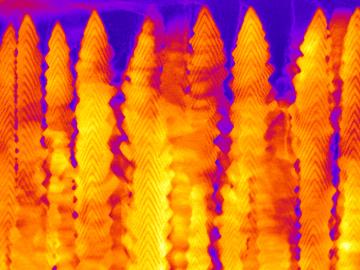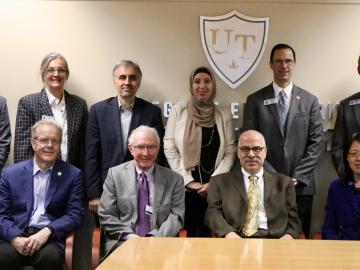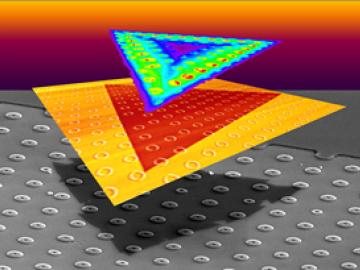
Filter News
Area of Research
- (-) Materials (53)
- Biology and Environment (26)
- Computational Engineering (1)
- Computer Science (2)
- Electricity and Smart Grid (1)
- Energy Science (29)
- Functional Materials for Energy (1)
- Fusion and Fission (8)
- Fusion Energy (1)
- Isotope Development and Production (1)
- Isotopes (17)
- Materials Characterization (1)
- Materials for Computing (6)
- Materials Under Extremes (1)
- National Security (4)
- Neutron Science (19)
- Nuclear Science and Technology (7)
- Supercomputing (26)
News Type
News Topics
- (-) Advanced Reactors (2)
- (-) Biomedical (3)
- (-) Exascale Computing (1)
- (-) Isotopes (5)
- (-) Materials Science (43)
- 3-D Printing/Advanced Manufacturing (13)
- Artificial Intelligence (5)
- Bioenergy (9)
- Biology (4)
- Buildings (3)
- Chemical Sciences (22)
- Composites (3)
- Computer Science (8)
- Coronavirus (2)
- Critical Materials (8)
- Cybersecurity (3)
- Energy Storage (21)
- Environment (9)
- Frontier (3)
- Fusion (3)
- Grid (3)
- High-Performance Computing (3)
- Irradiation (1)
- ITER (1)
- Machine Learning (3)
- Materials (46)
- Microscopy (17)
- Molten Salt (2)
- Nanotechnology (25)
- National Security (3)
- Neutron Science (21)
- Nuclear Energy (5)
- Partnerships (9)
- Physics (19)
- Polymers (8)
- Quantum Computing (2)
- Quantum Science (10)
- Security (1)
- Simulation (1)
- Summit (1)
- Transportation (5)
Media Contacts

An ORNL team used a simple process to implant atoms precisely into the top layers of ultra-thin crystals, yielding two-sided structures with different chemical compositions.

In the search to create materials that can withstand extreme radiation, Yanwen Zhang, a researcher at the Department of Energy’s Oak Ridge National Laboratory, says that materials scientists must think outside the box.

A team led by the Department of Energy’s Oak Ridge National Laboratory synthesized a tiny structure with high surface area and discovered how its unique architecture drives ions across interfaces to transport energy or information.

OAK RIDGE, Tenn., Feb. 27, 2020 — Researchers at Oak Ridge National Laboratory and the University of Tennessee achieved a rare look at the inner workings of polymer self-assembly at an oil-water interface to advance materials for neuromorphic computing and bio-inspired technologies.

OAK RIDGE, Tenn., Feb. 12, 2020 -- Michael Brady, a researcher at the Department of Energy’s Oak Ridge National Laboratory, has been named fellow of the National Association of Corrosion Engineers, or NACE International.

An international team of researchers has discovered the hydrogen atoms in a metal hydride material are much more tightly spaced than had been predicted for decades — a feature that could possibly facilitate superconductivity at or near room temperature and pressure.

Rigoberto “Gobet” Advincula has been named Governor’s Chair of Advanced and Nanostructured Materials at Oak Ridge National Laboratory and the University of Tennessee.

ORNL and The University of Toledo have entered into a memorandum of understanding for collaborative research.

Quanex Building Products has signed a non-exclusive agreement to license a method to produce insulating material from ORNL. The low-cost material can be used as an additive to increase thermal insulation performance and improve energy efficiency when applied to a variety of building products.

A team led by scientists at the Department of Energy’s Oak Ridge National Laboratory explored how atomically thin two-dimensional (2D) crystals can grow over 3D objects and how the curvature of those objects can stretch and strain the


